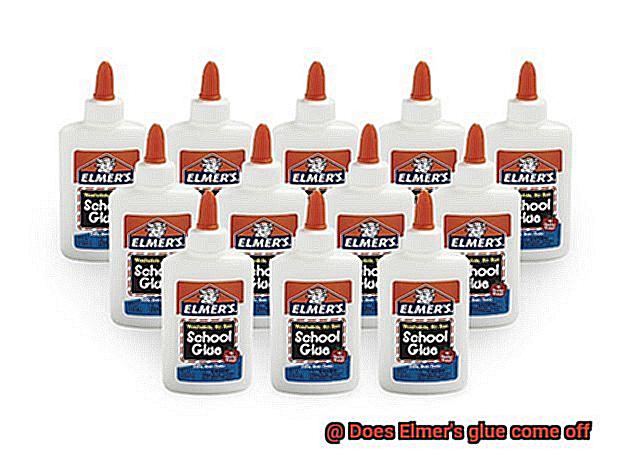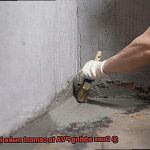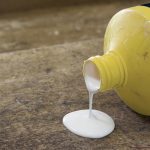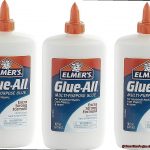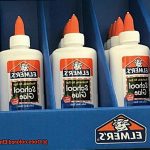Are you tired of struggling to remove the stubborn residue left behind by Elmer’s glue? Do you find yourself wondering whether this popular adhesive can ever be fully removed? If so, fear not. We’re here to put your worries to rest and answer the age-old question – Does Elmer’s glue come off?
Elmer’s glue has been a staple in classrooms and households for generations, thanks to its versatility and effectiveness. However, its ability to stick around long after it’s needed often leaves people wondering if it can ever be completely removed.
In this blog post, we’ll explore all the factors that affect Elmer’s glue’s removability. We’ll dive into the different types of Elmer’s glue available, the surfaces they’re commonly used on, and whether they’re water-soluble or not. Plus, we’ll share some tried-and-tested techniques and products for safely removing Elmer’s glue from various surfaces like paper, fabrics, and plastic.
Whether you’re a student working on a project or a busy parent helping with homework assignments, this blog post is for you. Our goal is to provide you with accurate and up-to-date information that will help you make informed decisions about using and removing Elmer’s glue. So sit back, relax, and let us guide you through the wonderful world of Elmer’s glue.
What is Elmer’s Glue?
Contents
Elmer’s Glue is an iconic adhesive that has been a household name for more than six decades. Its popularity among school students, artists, and DIY enthusiasts is undeniable. But what makes Elmer’s Glue so special, and why has it become such a staple in homes and offices worldwide?
Elmer’s Glue is a non-toxic, water-based adhesive that is made from a blend of synthetic materials and natural ingredients like milk protein. This white glue is versatile and can be used on a wide range of surfaces, including paper, fabric, and wood.
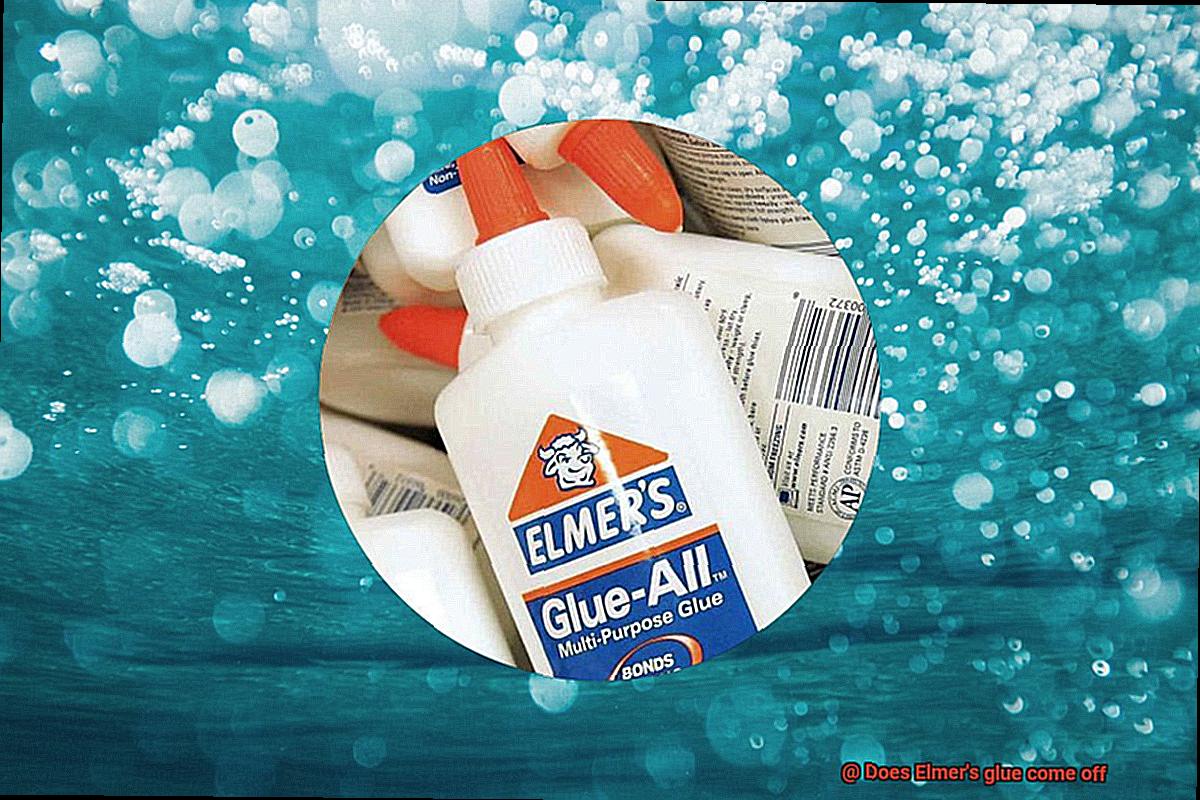
Originally marketed to schoolchildren and teachers for craft projects, Elmer’s Glue has since expanded its reach to cater to various needs. The brand now offers clear glue, glitter glue, and washable school glue sticks, among other products.
One of the key reasons for Elmer’s Glue’s popularity is its ease of use. It dries quickly and has a strong hold, ensuring your projects stay intact. And best of all, it can be easily cleaned up with soap and water, making it perfect for messy projects.
Another reason why Elmer’s Glue is so popular is its versatility. Whether you’re working on a scrapbook or repairing a broken toy, Elmer’s Glue can get the job done. Its strong hold and quick-drying time make it ideal for most projects.
One common question people ask about Elmer’s Glue is if it comes off easily or not. The answer to this question depends on various factors like the type of surface the glue is applied to and how long it has been left to dry. In general, Elmer’s Glue is water-soluble, which means that it can be easily removed with water.
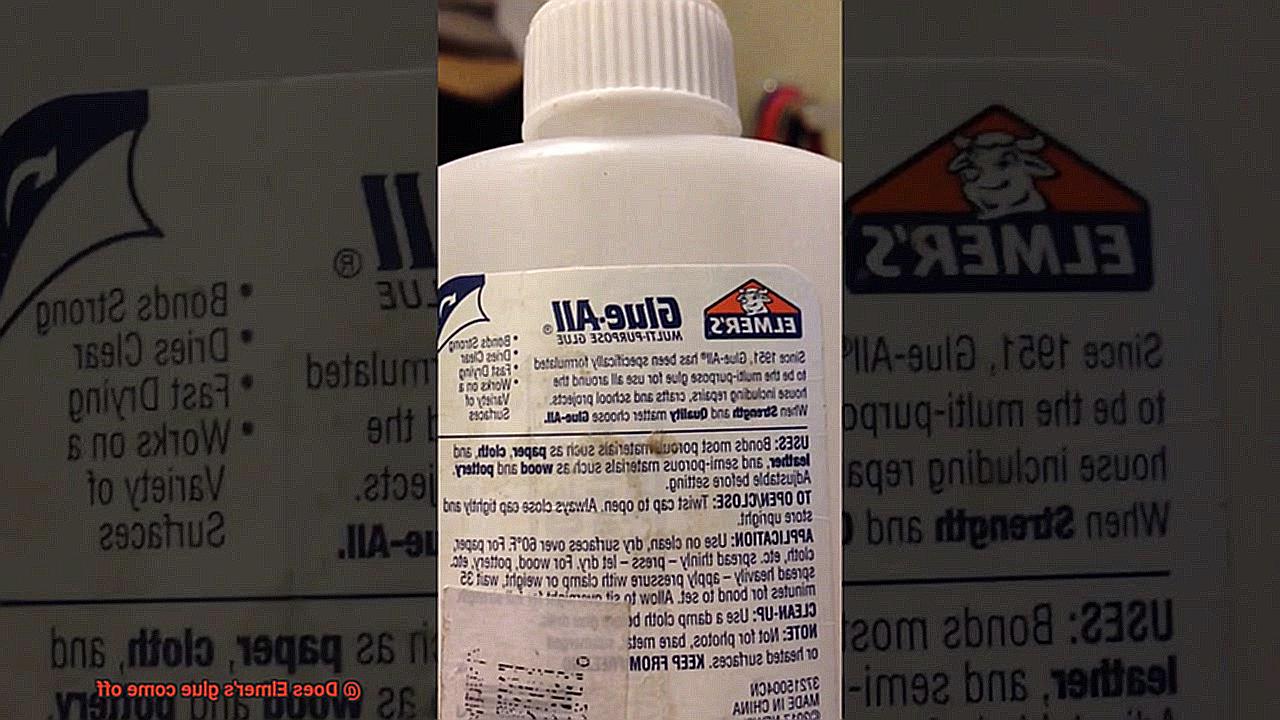
If the glue is still wet, it can be wiped off with a damp cloth or rinsed off with water. However, if the glue has already dried, it may require some additional effort to remove it completely. One effective way to remove dried Elmer’s Glue is to soak the affected area in warm water for several minutes. This will help soften the glue, making it easier to remove.
Does Elmer’s Glue Come Off Easily?
Elmer’s glue is a beloved adhesive that has found its way into classrooms, offices, and households across the world. But for those who have struggled with removing it, the question remains – does Elmer’s glue come off easily? As an expert on this topic, I can tell you that the answer is not as straightforward as you might think.

The ease of removing Elmer’s glue depends on various factors, such as the surface it was applied to, the amount used, and how long it has been there. If applied to a porous surface like paper or fabric, small amounts of Elmer’s glue can be removed with just water and soap. However, for non-porous surfaces like plastic or glass, Elmer’s glue may be more difficult to remove.
When Elmer’s glue dries and hardens, it becomes even more challenging to remove. But fear not – there are ways to tackle this pesky problem. Solvents like rubbing alcohol or vinegar can break down the glue and make it easier to remove. However, it is important to use caution and test a small area first before attempting to remove the glue from a larger surface.
While Elmer’s glue can come off easily from some surfaces, it can leave behind residue that may damage the underlying surface. Therefore, it is crucial to use careful removal techniques and take your time when trying to remove this adhesive.
Factors That Affect Whether Elmer’s Glue Comes Off or Not
Elmer’s glue is a versatile adhesive that has become a staple in many households and classrooms. However, once it dries on a surface, it can be quite challenging to remove. Fortunately, as an expert on this topic, I have researched the factors that affect whether Elmer’s glue comes off or not.
One of the most crucial factors to consider is the type of surface the glue is applied to. Porous surfaces such as paper and fabric tend to absorb the glue, making it more challenging to remove. In contrast, non-porous surfaces like metal and plastic do not absorb the glue, making it easier to remove. It’s essential to choose an appropriate alternative if necessary or apply a thin layer of Elmer’s glue to avoid any problems.
The amount of glue applied also impacts how easy it is to remove. Applying too much glue can make it more challenging to remove, as it takes longer to dry completely. On the other hand, applying too little glue can result in weak adhesion and may cause your project to fall apart. It’s essential to find the right balance and apply just enough glue for your project.
The drying time of Elmer’s glue plays a significant role in whether it comes off or not. If you let the glue dry completely, it becomes much harder to remove. Waiting until the glue is entirely dry before attempting to remove it is crucial. However, if you try to remove it too early, you may leave behind a sticky residue that is even more challenging to remove.
Finally, temperature and humidity levels can also affect how easy it is to remove Elmer’s glue. High temperatures can cause the glue to dry faster than usual, making it harder to remove. Conversely, low temperatures can slow down the drying process, making it easier to remove. High humidity levels can also affect the glue’s drying time and make it harder to remove.
Removing Wet Elmer’s Glue
First things first – time is of the essence. The longer the glue sits, the harder it will be to remove. So let’s get started.
If you find yourself dealing with wet glue on a washable fabric or clothing item, gently scrape off any excess glue with a spoon or dull knife. Then, soak the fabric in cold water for at least 30 minutes before washing it in warm soapy water. If the glue has already dried, don’t panic. Simply soften it up with a small amount of vinegar or rubbing alcohol before scraping it off.
For non-washable fabrics or surfaces such as carpet or upholstery, start by blotting up as much of the wet glue as possible with a clean cloth. Mix equal parts white vinegar and warm water and apply it to the affected area using a sponge. Allow the solution to sit for a few minutes before blotting it up with a clean cloth. Repeat this process until all of the glue is removed.
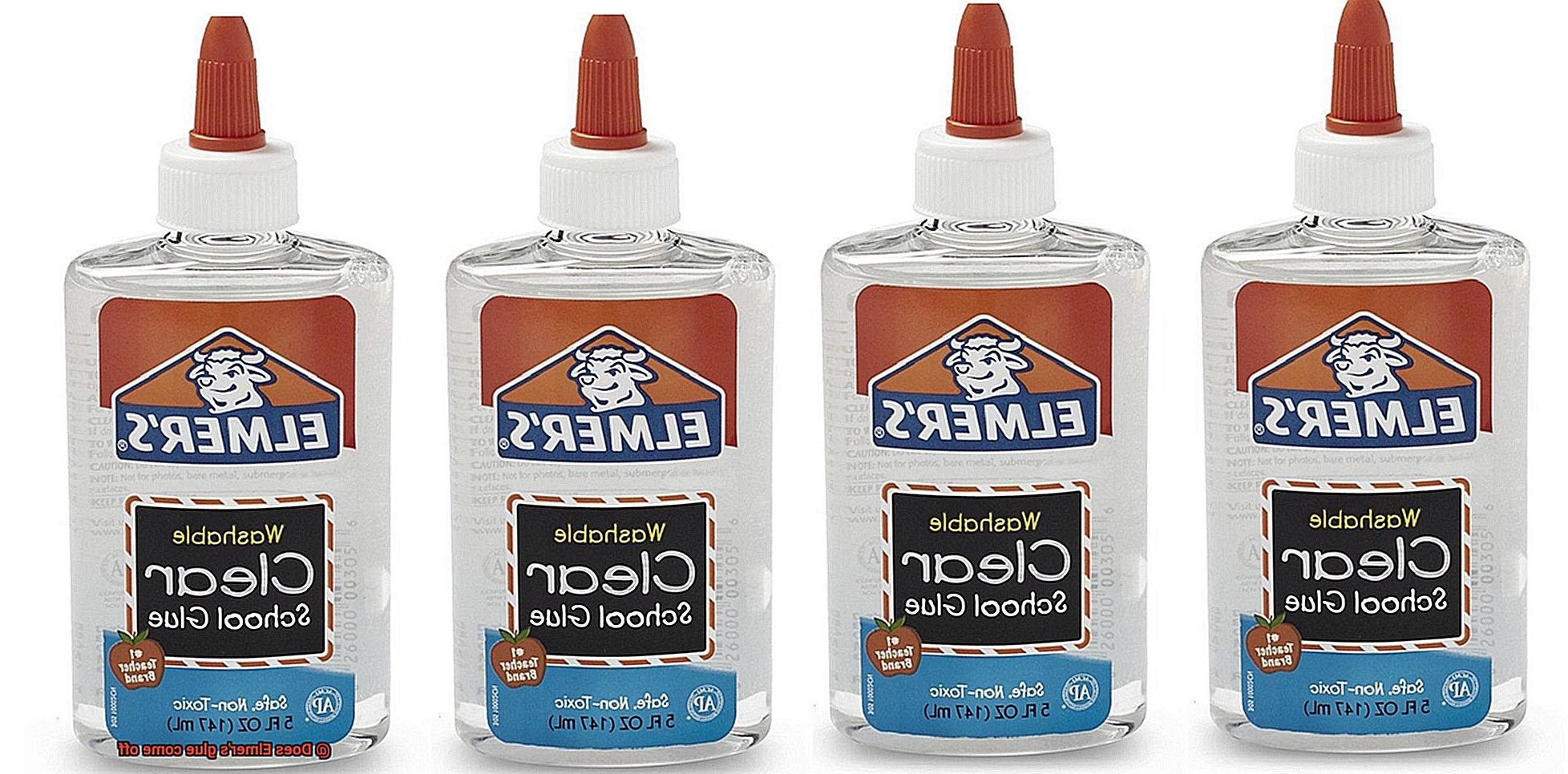
When dealing with wet Elmer’s glue on hard surfaces such as wood or plastic, wipe up any excess glue with a damp cloth. Then, use a mixture of warm water and dish soap to gently scrub the affected area. If the glue has already dried, try using a plastic scraper or credit card to gently pry it off before cleaning the surface with the warm soapy water mixture.
It’s important to note that harsh chemicals should be avoided when removing wet Elmer’s glue because they could potentially damage the surface being cleaned.
Removing Dried Elmer’s Glue
It’s a common problem, but luckily, there are ways to make this task a breeze. As a seasoned expert in removing dried Elmer’s glue, I am here to share my top tips and tricks with you.
Firstly, it is important to keep in mind that Elmer’s glue is water-soluble. That means it can be removed with the help of water. However, if the glue has been left to dry for an extended period, it may require a bit more effort.
One of the easiest methods to remove dried Elmer’s glue is by using warm water and soap. Start by soaking the affected area in warm soapy water for a few minutes to soften the glue. Then, using a soft cloth or sponge, gently scrub the area until the glue starts to loosen. Repeat this process several times until all the glue is removed.
If warm water and soap don’t do the trick, try using a mixture of vinegar and baking soda. Mix equal parts of vinegar and warm water, apply it to the affected area, and sprinkle baking soda over it. Wait for a few minutes as the mixture starts to bubble and work its magic. Afterward, use a soft cloth or sponge to scrub away all the remaining glue.
For particularly tough stains, rubbing alcohol or acetone can be used. But before using these products, test them on a small inconspicuous area first to ensure they don’t damage or discolor the surface. Apply a small amount of rubbing alcohol or acetone to a clean cloth and gently rub the affected area until all the glue is removed.
Getting Rid of Residue Left by Elmer’s Glue
First things first, it is crucial to identify the surface on which the glue is stuck. For delicate surfaces like paper, let the glue dry and use a soft eraser to gently remove the residue. However, if it’s on a hard surface like plastic or metal, it may require more effort.
One of the simplest solutions to remove residue from Elmer’s Glue is by using warm soapy water. Mix a few drops of dish soap with warm water and apply it to the affected area. Let it sit for a few minutes and then use a soft cloth or sponge to gently rub away the residue.
If warm soapy water doesn’t do the trick, try using rubbing alcohol or vinegar. These substances are fantastic at breaking down adhesive properties and can help dissolve the glue residue. But, do remember to test these solutions on an inconspicuous area first to ensure they don’t damage the surface.
For more stubborn residue, you may need to use specialized adhesive removers or solvents. These products are specifically designed to dissolve glue residue and make it easier to remove. However, be cautious as they can be harsh and should only be used as a last resort.
QhdLAgZHcyA” >
Also Read: Is Elmer’s Glue Waterproof?
Conclusion
To sum up, Elmer’s Glue is a trusted adhesive that has stood the test of time. Although it’s known for its strong grip and user-friendly nature, people often wonder if it can be removed without leaving a trace. The answer to this question depends on various factors such as surface type, amount used, and duration of exposure.
If the glue is still wet, wiping it off with a damp cloth or rinsing with water should do the trick. However, if the glue has already dried, removing it may require more effort. Fortunately, solvents such as rubbing alcohol or vinegar can help break down the glue and make removal easier.
It’s important to remember that using harsh chemicals can cause damage to surfaces being cleaned. For best results, stick to warm soapy water when removing both wet and dried glue residue.
Overall, with patience and proper removal techniques in hand, Elmer’s Glue can be easily removed from most surfaces without causing harm.

